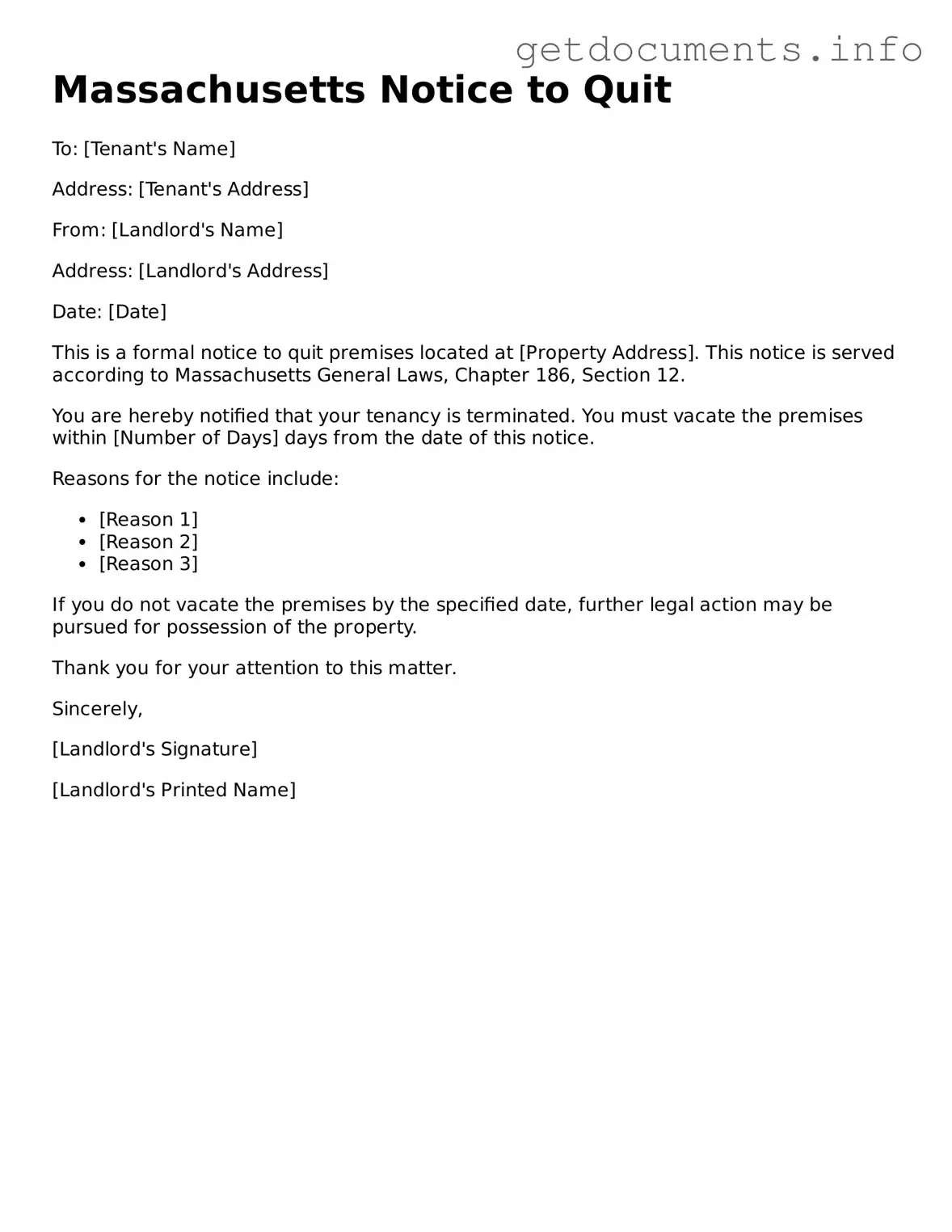Free Notice to Quit Template for Massachusetts
The Massachusetts Notice to Quit form is an essential document used by landlords to formally notify tenants of their intent to terminate a lease agreement. This notice outlines the reasons for eviction and provides the tenant with a specific timeframe to vacate the property. Understanding this form is crucial for both landlords and tenants to ensure a smooth transition, so don’t hesitate to fill out the form by clicking the button below.
Access Notice to Quit Editor
